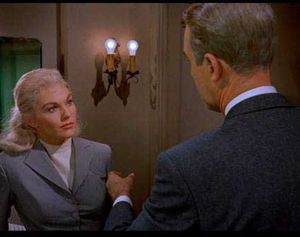High Angle
In a high angle shot, the camera in this case is placed above the actor, and can be used to suggest the insignificance or lack of status of a character.

Low Angle
Taken from beneath the actor, a Low Angle shot can suggest the importance or strength of a character.

Dutch Angle:
A Dutch or Canted Angle places the camera off-position so that the frame is at a tilted angle, normally during moments of disorientation. This can reflect the confusion of characters.

Over the Shoulder Shot:
An Over the Shoulder Shot involves the camera being placed over the shoulder of one actor, normally during a conversation. These can also form the Two Shot, which features two characters within the frame. These are found frequently in Film and Television Dramas.

Crane Shot:
These shots can be taken from a high level or from eye level initially, and involves the camera being raised above the characters on a crane, allowing for a smooth camera movement. These are often used to introduce characters being introduced to new surroundings.

Point of View Shot
These shots are normally taken at eye level and involves the audience by making them a voyeur. They see what the character sees, and therefore sympathy is built for the audience and they can be portrayed as the protagonist.

Tracking Shot:
This camera movement involves the camera being moved either in or out, or side to side (crabbing), in order to follow or focus on a character. This term derives from the camera usually being placed on tracks to achieve smooth movements.

Pan/ Tilt
This involves the camera being on a fixed axis and turning from this point from side to side (a pan) or up and down (a tilt), which allows for a camera or object to be followed. This is usually to suggest the speed at which something is moving.

Zoom
A zoom does not involve any camera movement, but suggests speed by quickly moving in onto an actor's face, for example, and bringing them into focus sharply. This can be used to shock the viewer or show dramatic impact.
Other cinematography terms:
Follow focus
This is an additional camera trick which can be used, involving two characters or objects within the frame (in the background and foreground). The character out of focus in the background will come into focus and the foreground out of focus, or vice versa, to show change or juxtaposition.
Rule of thirds
This is the theory used in the composition and framing of shots, by splitting the frame into nine sections or 'thirds' which intersect. At these intersections are the places onscreen wherein characters and objects are most usually placed, as they are easily in focus for the audience.
Depth of field
This refers to the amount of space or distance between objects within the frame. If there is a deep depth of field, the camera keeps all characters within the frame in focus. If there is a small or shalow depth of field, there is distance between the characters and one area of the frame is in focus.
No comments:
Post a Comment